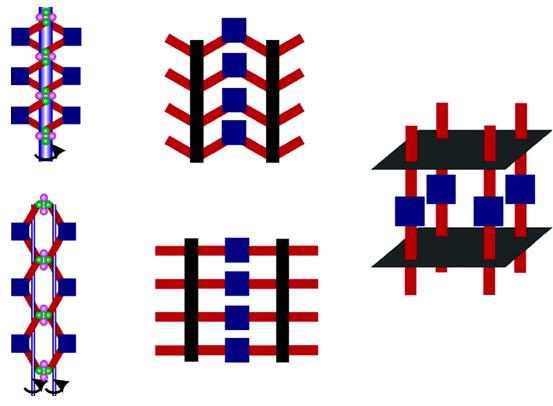
Rong Peng, Dan Li,* Tao Wu, Xiao-Ping Zhou, and Seik Weng Ng

Abstract: This work focuses on the systematic investigation of the influences of pyrimidine-based thioether ligand geometries and counteranions on the overall molecular architectures. A N-containing heterocyclic dithioether ligand 2,6-bis-(2-pyrimidinesulfanylmethyl)pyridine (L1) and three structurally related isomeric bis(2-pyrimidinesulf anylmethyl)-benzene (L2-L4) ligands have been prepared. On the basis of the self-assembly of CuX (X ) I, Br, Cl, SCN, orCN) and the four structurally related flexible dithioether ligands, we have synthesized and characterized 10 new metal-organic entities, Cu4(L1)2I4 1, Cu4(L1)2Br4 2, [Cu2(L2)2I2âCH3CN]n 3, [Cu(L3)I]n 4, [Cu(L3)Br]n 5, [Cu(L3)CN]n 6, [Cu(L4)CN]n 7, [Cu2(L4)I2]n 8, [Cu2(L4)(SCN)2]n 9, and {[Cu6I5(L4)3](BF4)âH2O}n 10, by elemental analyses, IR spectroscopy, and X-ray crystallography. Single-crystal X-ray analyses show that the 10 Cu(I) complexes possess an increasing dimensionality from 0D (1 and 2) to 1D (3-5) to 2D (6-9) to 3D (10), which indicates that the ligand geometry takes an essential role in the framework formation of the Cu(I) complexes. The influence of counteranions and ð-ð weak interactions on the formation and dimensionality of these coordination polymers has also been explored. In addition, the photoluminescence properties of Cu(I) coordination polymers 4-10 in the solid state have been studied.
文章链接:![]() ic060074x.pdf
ic060074x.pdf




